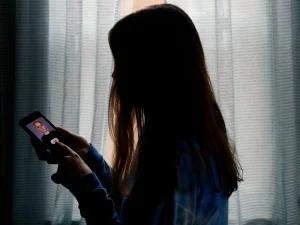Places
adminTravelBudget travel does not have to be what many of us had the privilege of doing in our early 20s — staying in a hostel, scrounging for cheap eats or maybe even sleeping in a train station.
You can have satisfying experiences without draining your bank account or compromising on safety or quality, say travel experts. You’ll just need to avoid a few common financial mistakes — and let go of the luxury travel images you keep seeing on social media.
“We have Champagne dreams and beer budgets,” says Crissy Whalin of Single Mom Budget Travel. So, let’s “come back to planet Earth and explore it in a way that’s realistic.”
Whether you’re planning a quick weekend getaway or a big trip abroad, this guide will help you check your assumptions about budget travel — and potentially save you thousands of dollars.
Mistake No. 1: Traveling to your dream destination
Do this instead: Go to a “destination dupe”
If Paris is out of your budget, plan a trip to a more affordable city with a similar vibe, like Montreal.
Photograph by Tsering Bista and Beck Harlan
If your dream destination is out of budget, look for an affordable lookalike.
For example, if you’re a Francophile but can’t swing the trans-Atlantic trip to Paris, try a shorter flight to Montreal or Quebec City. A June round trip ticket from New York City to Paris averages $1,104, whereas a summer round trip ticket from New York City to Montreal averages just $409.
Don’t forget to factor in the cost of activities and accommodation. If you’re considering a trip to California’s Napa Valley, maybe look into the Finger Lakes region in New York, says travel journalist Brittney Oliver. “They’re known for their Riesling,” she says — and the trip will cost you a fraction of the price.
The Finger Lakes area has plenty of excellent hotel options for well under $100 per night — you won’t find that in Napa. And while the average cost of a basic wine tasting is $40 in Napa, it ranges from about $5 to $12 at the Finger Lakes wineries. There’s also great skiing around the Finger Lakes — who needs a trip to the Alps?
Mistake No. 2: Picking specific dates for your trip
Do this instead: Be flexible with your travel timing
For cheaper flights, avoid traveling on Sundays and Mondays.
Photograph by Tsering Bista and Beck Harlan
Travel can be expensive. Even with the U.S. Department of Transportation cracking down on airline fees in 2024, over the course of the year, airfare costs still jumped 25%.
So be less precious about your travel timing and book a trip during the offseason. In 2022, I brought my family of three to the Greek island of Santorini, a popular summer destination, in January. The flights were just $500 per person round trip. If we had been dead-set on hitting dream summer weather, the flights would have been over $1,000 each.
Also, avoid flying on Sundays and Mondays, which tend to be the most expensive due to weekend trips and business travelers, according to 2024 data from flight app Hopper.
Mistake No. 3: Assuming vacation rentals are cheapest
Do this instead: Consider hotels, hostels or a home swap
A vacation rental isn’t always a better deal than a traditional hotel.
Photograph by Tsering Bista and Beck Harlan
Travelers often assume that a vacation rental like Airbnb or VRBO will be more affordable than a hotel, but that’s not always the case. According to reporting from The Points Guy, the average daily Airbnb rate in 2023 was 36% higher than it was just three years prior. During that same time period, Hilton’s average rates increased by 7.8%.
Beyond vacation rentals and five-star hotels, you have options.
Budget hotels: Some brands, like Novotel and Ibis, offer rooms even lower than $50 per night. Whalin recommends Ibis hotels because they’re cheap, clean and some even offer a microwave and a mini fridge.
Hostels: While you may think of hostels as crowded spots filled with college-age backpackers, a little creative research will help you find ones that are anything but.
Whalin, who has been traveling as a single mom with her 16-year-old since he was 10, has stayed in family hostels in Finland, Germany, Norway and Spain. Some of the best family-friendly hostels across Europe include cribs, high chairs and game rooms for the kids. “They’re amazing, clean and safe, and I’ve never regretted it,” she says.
House-sitting, pet-sitting and house swaps. With sitting, you stay in someone’s home for free while they’re away in exchange for pet and plant care and the like. With swapping, you exchange homes with someone — just like Kate Winslet and Cameron Diaz in the 2006 rom-com, The Holiday.
Try sites like Trusted House Sitters, Love Home Swap and Kid & Coe. Membership costs about $100 to $200 and grants you access to build a profile and browse around the listings. Then, you apply for a sit or swap somewhere that strikes your fancy, and the homeowners review your application and reach out if it’s a fit. It’s a lot like online dating, but for houses and dogs.
Take note: Some countries consider house-sitting a type of work and require that you have a work visa for entry, so check with the embassy of the country you plan to visit before booking your swap.
Mistake No. 4: Staying in the city center
Do this instead: Trek to the outskirts of the city
Stay in areas outside of the city center when you travel. It’s a great way to save money and expand your experience beyond typical tourist destinations.
Photograph by Tsering Bista and Beck Harlan
Get off the beaten path. In general, food, activities, nightlife and even shopping in the touristy center of town tend to be more expensive. “Times Square or Hollywood, that’s where you’re going to spend all your money,” says Oliver.
If you’re traveling to New York City, for example, take the subway toward the end of the 1 line to 231st or 242nd Street, where I grew up in the Bronx. You’ll find a variety of international cuisine at more affordable prices. While a mid-priced meal for two averages around $145 in Manhattan. it’s more like $65 for the same up in the Bronx.
If you’re in Paris, take a break from spending money on museum tickets and ride the train to St. Ouen. Browsing (and ‘gramming) its antique markets are a delightful way to spend an afternoon, even if you don’t spend a dime — er, a euro.
Mistake No. 5: Paying with credit
Do this instead: Pay with points and cash
If you’re going to pay with points, use them strategically. Book flights during off-peak times or for longer-haul trips where points stretch further.
Photograph by Tsering Bista and Beck Harlan
Your first instinct may be to use your credit card while you travel to earn points. But it can also set you up for budgeting failure by making you blissfully unaware of how much you’ve actually spent, says Oliver.
And if you can’t pay off that credit card bill ASAP, you’ll be racking up interest charges and fees, which you definitely don’t want. So stay aware of what you tend to spend on and delegate a limited cash fund for your most frequent culprits, whether that’s food or souvenirs.
If you’re going to pay for travel with points, use them strategically. Book flights during off-peak times or for longer-haul trips where points stretch further. Don’t waste points on something that could be cheaper out of pocket; always compare the cash vs. points price of a flight, for example, to find your best cent-per-point value.
Of course, avoiding these five money mistakes may result in a trip to, say, Tokyo, that looks a little different from what you envisioned.
Remember, “comparison is the thief of joy,” says Whalin. So maybe you missed the cherry blossoms because you didn’t pay for peak flight prices. Maybe you’re staying at a quiet hostel several subway stops away from bustling Shibuya. And maybe this will actually be your favorite trip yet.
Author: Amelia Edelman
Copyright MCC Local A Smack Media Group company. for more content, visit npr.org [...]
Read more...
adminLivingBack in 2017, psychologist Jean Twenge set off a firestorm in the field of psychology.
Twenge studies generational trends at San Diego State University. When she looked at mental health metrics for teenagers around 2012, what she saw shocked her. “In all my analyses of generational data — some reaching back to the 1930s — I had never seen anything like it,” Twenge wrote in the Atlantic in 2017.
Twenge warned of a mental health crisis on the horizon. Rates of depression, anxiety and loneliness were rising. And she had a hypothesis for the cause: smartphones and all the social media that comes along with them. “Smartphones were used by the majority of Americans around 2012, and that’s the same time loneliness increases. That’s very suspicious,” Twenge told NPR in 2017.
But many of her colleagues were skeptical. Some even accused her of inciting a panic with too little — and too weak — data to back her claims.
Now, six years later, Twenge is back. She has a new book out this week, called Generations, with much more data backing her hypothesis. At the same time, several high-quality studies have begun to answer critical questions, such as does social media cause teens to become depressed and is it a key contributor to a rise in depression?
In particular, studies from three different types of experiments, altogether, point in the same direction. “Indeed, I think the picture is getting more and more consistent,” says economist Alexey Makarin, at the Massachusetts Institute of Technology.
A seismic change in how teens spend their time
In Generations, Twenge analyzes mental health trends for five age groups, from the Silent Generation, who were born between 1925 and 1945, to Gen Z, who were born between 1995 and 2012. She shows definitively that “the way teens spend their time outside of school fundamentally changed in 2012,” as Twenge writes in the book.
Take for instance, hanging out with friends, in person. Since 1976, the number of times per week teens go out with friends — and without their parents — held basically steady for nearly 30 years. In 2004, it slid a bit. Then in 2010, it nosedived.
“It was just like a Black Diamond ski slope straight down,” Twenge tells NPR. “So these really big changes occur.”
At the same time, around 2012, time on social media began to soar. In 2009, only about half of teens used social media every day, Twenge reports. In 2017, 85% used it daily. By 2022, 95% of teens said they use some social media, and about a third say they use it constantly, a poll from Pew Research Center found.
“Now, in the most recent data, 22% of 10th grade girls spend seven or more hours a day on social media,” Twenge says, which means many teenage girls are doing little else than sleeping, going to school and engaging with social media.
Not surprisingly, all this screen time has cut into many kids’ sleep time. Between 2010 and 2021, the percentage of 10th and 12th graders who slept seven or fewer hours each night rose from a third to nearly one-half. “That’s a big jump,” Twenge says. “Kids in that age group are supposed to sleep nine hours a night. So less than seven hours is a really serious problem.”
On its own, sleep deprivation can cause mental health issues. “Sleep is absolutely crucial for physical health and for mental health. Not getting enough sleep is a major risk factor for anxiety and depression and self-harm,” she explains. Unfortunately, all of those mental health problems have continued to rise since Twenge first sounded the alarm six years ago.
“Nuclear bomb” on teen social life
“Every indicator of mental health and psychological well-being has become more negative among teens and young adults since 2012,” Twenge writes in Generations. “The trends are stunning in their consistency, breadth and size.”
Across the board, since 2010, anxiety, depression and loneliness have all increased. “And it’s not just symptoms that rose, but also behaviors,” she says, “including emergency room visits for self-harm, for suicide attempts and completed suicides.” The data goes up through 2019, so it doesn’t include changes due to COVID-19.
All these rapid changes coincide with what, Twenge says, may be the most rapid uptake in a new technology in human history: the incorporation of smartphones into our lives, which has allowed nearly nonstop engagement with social media apps. Apple introduced the first iPhones in 2007, and by 2012, about 50% of American adults owned a smartphone, the Pew Research Center found.
The timing is hard to ignore, says data scientist Chris Said, who has a Ph.D. in psychology from Princeton University and has worked at Facebook and Twitter. “Social media was like a nuclear bomb on teen social life,” he says. “I don’t think there’s anything in recent memory, or even distant history, that has changed the way teens socialize as much as social media.”
Murky picture becomes clearer on causes of teen depression
But the timing doesn’t tell you whether social media actually causes depression in teens.
In the past decade, scientists have published a whole slew of studies trying to answer this question, and those studies sparked intense debate among scientists and in the media. But, Said says, what many people don’t realize is scientists weren’t using — or didn’t even have — the proper tools to answer the question. “This is a very hard problem to study,” he says. “The data they were analyzing couldn’t really solve the problem.”
Mental Health
The mental health of teen girls and LGBTQ+ teens has worsened since 2011
So the findings have been all over the place. They’ve been murky, noisy, inconclusive and confusing. “When you use tools that can’t fully answer the question, you’re going to get weak answers,” he says. “So I think that’s one reason why really strong evidence didn’t show up in the data, at least early on.”
On top of it, psychology has a bad track record in this field, Said points out. For nearly a century, psychologists have repeatedly blamed new technologies for mental and physical health problems of children, even when they’ve had little — or shady — data to back up their claims.
For example, in the 1940s, psychologists worried that children were becoming addicted to radio crime dramas, psychologist Amy Orben at the University of Cambridge explains in her doctoral thesis. After that, they raised concerns about comic books, television and — eventually — video games. Thus, many researchers worried that social media may simply be the newest scapegoat for children’s mental health issues.
A handful of scientists, including MIT’s Alexey Makarin, noticed this problem with the data, the tools and the field’s past failures, and so they took the matter into their own hands. They went out and found better tools.
Hundreds of thousands of more college students depressed
Over the past few years, several high-quality studies have come that can directly test whether social media causes depression. Instead of being murky and mixed, they support each other and show clear effects of social media. “The body of literature seems to suggest that indeed, social media has negative effects on mental health, especially on young adults’ mental health,” says Makarin, who led what many scientists say is the best study on the topic to date.
In that study, Makarin and his team took advantage of a once-in-a-lifetime opportunity: the staggered introduction of Facebook across U.S. colleges from 2004 to 2006. Facebook rolled out into society first on college campuses, but not all campuses introduced Facebook at the same time.
For Makarin and his colleagues, this staggered rollout is experimental gold.
“It allowed us to compare students’ mental health between colleges where Facebook just arrived to colleges where Facebook had not yet arrived,” he says. They could also measure how students’ mental health shifted on a particular campus when people started to spend a bunch of their time on social media.
Luckily, his team could track mental health at the time because college administrators were also conducting a national survey that asked students an array of questions about their mental health, including diagnoses, therapies and medications for depression, anxiety and eating disorders. “These are not just people’s feelings,” Makarin says. “These are actual conditions that people have to report.”
They had data on a large number of students. “The data comes from more than 350,000 student responses across more than 300 colleges,” Makarin says.
This type of study is called a quasi-experiment, and it allows scientists to estimate how much social media actually changes teens’ mental health, or as Makarin says, “We can get causal estimates of the impact of Facebook on mental health.”
So what happened? “Almost immediately after Facebook arrives on campus, we see an uptick in mental health issues that students report,” Makarin says. “We especially find an impact on depression rates, anxiety disorders and other questions associated with depression in general.”
And the effect isn’t small, he says. Across the population, the rollout of Facebook caused about 2% of college students to become clinically depressed. That may sound modest, but with more than 17 million college students in the U.S. at the time, that means Facebook caused more than 300,000 young adults to suffer from depression.
For an individual, on average, engaging with Facebook decreases their mental health by roughly 22% of the effect of losing one’s job, as reported by a previous meta-analysis, Makarin and his team found.
Facebook’s rollout had a larger effect on women’s mental health than on men’s mental health, the study showed. But the difference was small, Makarin says.
He and his colleagues published their findings last November in the American Economic Review. “I love that paper,” says economist Matthew Gentzkow at Stanford University, who was not involved in the research. “It’s probably the most convincing study I’ve seen. I think it shows a clear effect, and it’s really credible. They did a good job of isolating the effect of Facebook, which isn’t easy.”
Of course, the study has limitations, Gentzkow says. First off, it’s Facebook, which teens are using less and less. And the version of Facebook is barebones. In 2006, the platform didn’t have a “like” button” or a “newsfeed.” This older version probably wasn’t as “potent” as social media now, says data scientist Chris Said. Furthermore, students used the platform only on a computer because smartphones weren’t available yet. And the study only examined mental health impacts over a six-month period.
Nevertheless, the findings in this study bolster other recent studies, including one that Gentzkow led.
Social media is “like the ocean” for kids
Back in 2018, Gentzkow and his team recruited about 2,700 Facebook users ages 18 or over. They paid about half of them to deactivate their Facebook accounts for four weeks. Then Gentzkow and his team looked to see how a Facebook break shifted their mental health. They reported their findings in March 2020 in the American Economic Review.
This type of study is called a randomized experiment, and it’s thought of as the best way to estimate whether a variable in life causes a particular problem. But with social media, these randomized experiments have big limitations. For one, the experiments are short-term — here only four weeks. Also, people use social media in clusters, not as individuals. So having individuals quit Facebook won’t capture the effect of having an entire social group quit together. Both of these limitations could underestimate the impact of social media on an individual and community.
Nevertheless, Gentzkow could see how deactivating Facebook made people, on average, feel better. “Being off Facebook was positive across well-being outcomes,” he says. “You see higher happiness, life satisfaction, and also lower depression, lower anxiety, and maybe a little bit lower loneliness.”
Gentzkow and his team measured participants’ well-being by giving them a survey at the end of the experiment but also asking questions, via text message, through the experiment. “For example, we sent people text messages that say, ‘Right now, would you say you’re feeling happy or not happy,'” he explains.
Again, as with Makarin’s experiment, the effect was moderate. Gentzkow and his colleagues estimate that temporarily quitting Facebook improves a person’s mental health by about 30% of the positive effect seen by going to therapy. “You could view that meaning these effects are pretty big,” he explains, “or you could also see that as meaning that the effects of therapy are somewhat small. And I think both of those things are true to an extent.”
Scientists still don’t know to what extent social media is behind the rising mental health issues among teenagers and whether it is the primary cause. “It seems to be the case — like it’s a big factor,” says MIT’s Alexey Makarin, “but that’s still up for debate.”
Still, though, other specifics are beginning to crystallize. Scientists are narrowing in on what aspects of social media are most problematic. And they can see that social media won’t hurt every teen — or hurt them by the same amount. The data suggests that the more hours a child devotes to social media, the higher their risk for mental health problems.
Finally, some adolescents are likely more vulnerable to social media, and children may be more vulnerable at particular ages. A study published in February 2022 looked to see how time spent on social media varies with life satisfaction during different times in a child’s life (see the graphic).
The researchers also looked to see if a child’s present use of social media predicted a decrease of life satisfaction one year later. That data suggests two windows of time when children are most sensitive to detrimental effects of social media, especially heavy use of it. For girls, one window occurs at ages 11 through 13. And for boys, one window occurs at ages 14 and 15. For both genders, there’s a window of sensitivity around age 19 — or near the time teenagers enter college. Amy Orben and her team at the University of Cambridge reported the findings in Nature Communications.
This type of evidence is known as a correlative. “It’s hard to draw conclusions from these studies,” Gentzkow says, because many factors contribute to life satisfaction, such as environmental factors and family backgrounds. Plus, people may use social media because they’re depressed (and so depression could be the cause, not the outcome of social media use).
“Nevertheless, these correlative studies, together with the evidence from the causal experiments, paint a picture that suggests we should take social media seriously and be concerned,” Gentzkow adds.
Psychologist Orben once heard a metaphor that may help parents understand how to approach this new technology. Social media for children is a bit like the ocean, she says, noting that it can be an extremely dangerous place for children. Before parents let children swim in any open water, they make sure the child is well-prepared and equipped to handle problems that arise. They provide safety vests, swimming lessons, often in less dangerous waters, and even then parents provide a huge amount of supervision.
Alyson Hurt created the graphic. Jane Greenhalgh and Diane Webber edited the story.
Author: Michaeleen Doucleff
Copyright 2025 MCC Local A Smack Media Group company. For more content visit NPR.org [...]
Read more...
adminLivingIf you order up coffee on a mobile app while scrolling your social feeds, or can’t stop watching videos and reading news articles on your phone at bedtime, listen up!
Researchers studied what happened when people agreed to block the internet from their smartphones for just two weeks. And turns out, 91% felt better after the break.
“What we found was that people had better mental health, better subjective well-being and better sustained attention,” says Adrian Ward, a psychologist at the University of Texas at Austin.
The researchers included 467 participants, ages 18 to 74, who agreed to the month-long study aimed at testing the theory that constant connection to everything, all the time, has unintended consequences.
At a time when more then 90% of Americans have a smartphone, we forget that having an internet-enabled supercomputer at our fingertips 24/7 is a new phenomenon.
Ward, who is 38, remembers a dial-up connection in his home as a kid. In those days, the internet lived in a room in your home. “You used it at specific times because you had limited minutes and had to make sure nobody else was using the phone line,” Ward recalls.
So, what would it be like to go back to those days? No social media scrolling, no mobile-app shopping, no streaming shows or media on your phone?
The researchers measured three different outcomes of well-being, mood and attention at the beginning, middle and end of the four-week study. While 91% of participants improved their scores in at least one category, 71% reported better mental health after the break, compared to before, and 73% reported better subjective well-being.
The participants completed a survey often used by doctors to assess symptoms of depression and anxiety. It includes questions such as: How often in the past week have you felt little interest or pleasure in doing things you typically enjoy? The participants’ responses pointed to a significant lift in mood.
One of the surprising findings is that the decrease in depressive symptoms was on par — or even greater than — reductions documented in studies of people taking antidepressant medications.
“The size of these effects are larger than we anticipated,” says the study’s first author, Noah Castelo, an assistant professor at the University of Alberta in Canada.
Of course for some people, medications and/or talk therapy are key to managing mental health, and the researchers are not suggesting less internet time is a replacement for that kind of care.
A break from the internet on their phones also improved participants’ attention spans, which was measured by a computer task. They tracked images that alternated between mountain scenes and cities. Prior research has shown that performance tends to drop off as people age, but to the researchers’ surprise, after the internet break, there was a significant boost in scores. “The effects on attention were about as large as if participants had become 10 years younger,” Castelo says.
It’s not clear how long-lasting the effect of less time online would be, but this study validates what has been found in observational studies. “It’s one of the first experiments that does provide causal evidence that reducing time spent on your phone has all these significant benefits,” Castelo said.
When the participants agreed to block the internet on their phones, they were permitted to continue to use laptops or iPads at work or home, and they could also continue to use their phones to talk or text. So, researchers weren’t sure if participants would swap phones for another form of screen time.
But, as it turns out, breaking the habit of scrolling on their phones led to significant changes in how they spent their time. And, interestingly, each day the break went on, the benefits increased, almost like a positive feedback loop.
“It’s not that you stop using the internet and magically you just feel better,” Ward says. What happened is that people spent more time engaged in healthy behaviors.
“People reported that they spent more time in nature, more time socializing, more time doing hobbies,” he explains. They also got more sleep and felt more socially connected to other people.
“I’m not surprised by the findings,” says Dr. Judith Joseph, a psychiatrist at New York University Langone Medical Center and the author of High Functioning: Overcome Hidden Depression and Reclaim Your Joy. She says surveys show that most people don’t want to be tethered to their devices.
“They know their phones are a problem, but they just can’t stop,” she says. And she says when they start to engage in behaviors such as those seen in study — more exercise, time outdoors, good sleep, more social interactions — it’s not surprising that they start to feel better.
“Helping people to retrain their brain to derive joy from healthy activities has an antidepressant effect,” she says, so she says the findings pointing to a decrease in symptoms of depression and anxiety makes sense.
“If see this improvement in joy in such a short period of time, then that gives us hope,” she says, adding that simple changes can be beneficial.
Try it: Tips for scaling back your own smartphone use
During the study, many participants had to break the rules, just to accomplish things that their jobs or families required them to do, such as turning on a map app to navigate in the car or logging onto a Zoom meeting from their phone. It’s a reminder of how dependent we’ve become on our mobile devices.
It’s nearly impossible to go cold turkey, given the demands of our society. So what to do if you want to try this? “If we’re expected to be accessible at all moments, then how can we just decide that we’re going to disconnect?” Ward asks. It’s a societal struggle.
Here are a few ways to ease up on your screen time.
Take short breaks. Since most of us can’t turn off the internet and still function, Joseph recommends taking little breaks, beginning with baby steps. “If you can start with 30 minutes here, or 20 minutes there, try to see if you can increase these increments on a weekly basis,” she says
Consider a digital detox. Choose one day a week where you and your family power down, except what’s needed for communication. Or set a time, either at mealtime, or in the evenings when work is over, to connect face to face with family or friends, making a commitment to be “present” and in the moment.
Manage notification and add “friction.” Experts also advise turning off notifications and using apps to limit your time on certain social media. Some tools can help you reduce screen time by adding friction, i.e., making it just a little harder to start using whatever app you’re hooked to.
Try a dumb phone. If you’re really fed up and want to try something new, consider switching to a “boring” phone, like the old flip phones many of us used to rely on. That way you still have calling and texting (and some other tools, depending on the phone) but scrolling is a lot less compelling.
Pick up a new phone-free activity. It’s worth setting new habits in your offline life. Pick up a new hobby or make a regular date with a friend for a phone call. Like to take an evening stroll? Try leaving your phone at home and see how you feel. The more we give ourselves permission to disconnect, the more likely those around us will follow.
Author: Allison Aubrey
Copyright 2025 MCC Local A Smack Media Group For more content Visit NPR [...]
Read more...
adminEntertainment73M views 14 years ago #BluCantrell #OfficialVideo #Oops
Official Video for “Hit ‘Em Up Style (Oops)” by Blu Cantrell Listen to Blu Cantrell: https://BluCantrell.lnk.to/listenYD [...]
Read more...












